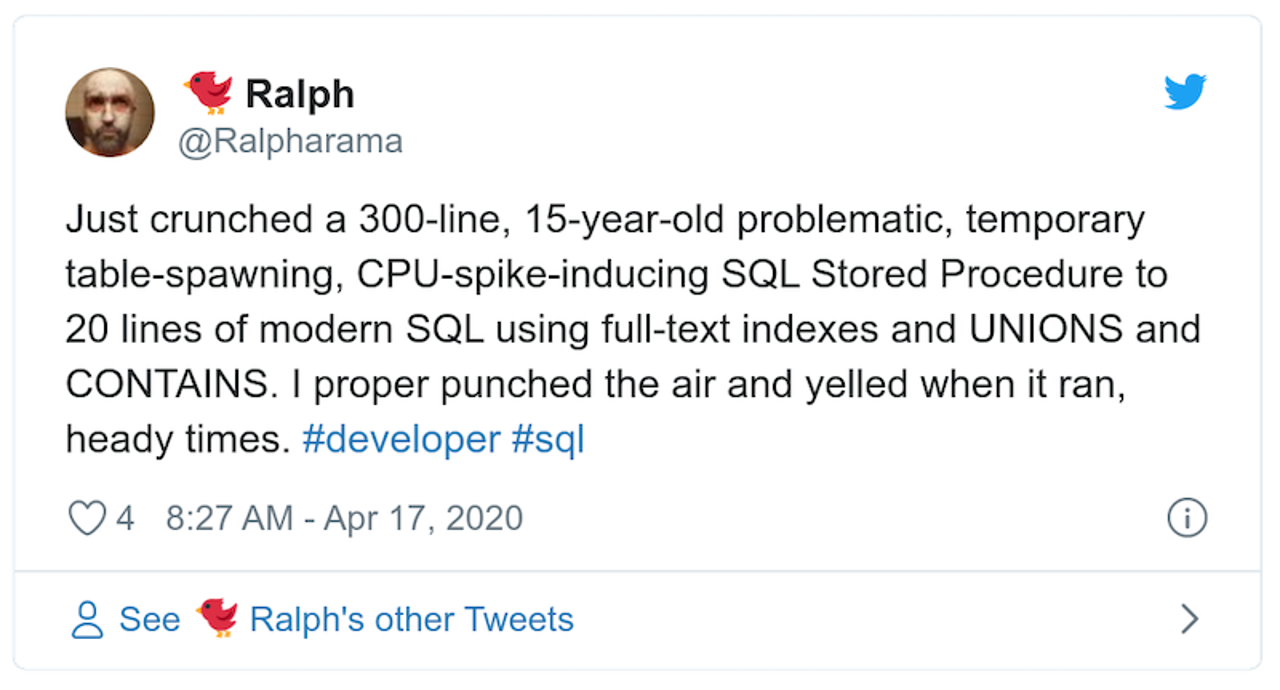#300 — April 17, 2020 |
Database Weekly |

|
|
Are Object Stores Starting to Look Like Databases? — Technically, any repository of data could be considered a ‘database’ but now object stores, such as those vast repositories of data sitting behind an S3 API, are beginning to resemble more structured, traditional databases in many ways. This feels a trend and market that will continue to grow in the near future. Alex Woodie (Datanami) |
|
Event-Reduce: An Algorithm to Optimize Frequently Running Queries — In brief, the idea is that rather than having to re-run queries when data changes on a table, you can basically merge in changes to previous query results. Be sure to check the FAQs. Daniel Meyer |

ACID Transactions in NoSQL? RavenDB Vs MongoDB by Mor Hilai — Where did the stereotype that only relational databases can be fully ACID come from? How did two NoSQL databases, MongoDB & RavenDB, become ACID at the cluster level? RavenDB sponsor |
|
TerminusDB: A Technical History — We’ve featured it before, but TerminusDB is an open source in-memory graph database built around WOQL (the Web Object Query Language). Here’s an explanation of where it came from and why it exists. Luke Feeney |
|
Comparing Redis 6's New Multithreaded I/O to ElastiCache and KeyDB — Redis 6 is on the way with threaded I/O being one of the likely new features. KeyDB is a Redis fork whose raison d’etre has been being multithreaded so this comparison may be of interest, though do note that this comes from KeyDB itself. Ben Schermel (KeyDB) |
|
Intersecting GPS Tracks to Identify Infected Individuals — I’m not a huge fan of COVID-19 related content, but this is a pretty interesting technique with numerous use cases. Essentially it uses PostGIS to identify overlapping paths. Florian Nadler |
|
Authentication Configuration in PostgreSQL and CockroachDB — In these databases, client authentication can be controlled via a ‘HBA’ (host-based authentication) file. Raphael ‘kena’ Poss |
|
How MongoDB Enables Machine Learning — If you haven’t played with the popular document-oriented database in a while, you can do quite a few things with it nowadays, including training and using ML algorithms. Mani Yangkatisal |
|
▶ 'We Got that Database', an 'All About that Bass' Parody — This is for fun only! A group of librarians have put together a fun database flavored parody of the rather irritating Meghan Trainor hit 😄 Tredyffrin Libraries on YouTube |
|
6 SQL Tricks Every Data Scientist Should Know Yi Li |
|
Why We Index Everything — Tired of managing indexes to speed up queries? Rockset automatically indexes every field in a row-based store, column-based store, and search index. Rockset sponsor |
|
Falcon: An Open-Source, Cross Platform SQL Client — Built around Electron and React, this basic client can quickly do chart visualizations of query results and can connect to RedShift, MySQL, PostgreSQL, IBM DB2, Impala, MS SQL, Oracle, SQLite and more. Plotly |
|
GeoDB: A Persistent Geospatial Database with Geofencing and Google Maps Support — Built using Badger gRPC and the Google Maps API. Track the geolocation of objects across boundaries or in relation to other objects. Coleman Word |
|
▶️ Get ready for your next role: Pluralsight is free for the entire month of April. Stay Home. Skill Up. #FreeApril — SPONSORED |
🐦 Seen on Twitter.. |
I think most of us have had this sort of experience with a 'legacy' system before.. 😄 |

|